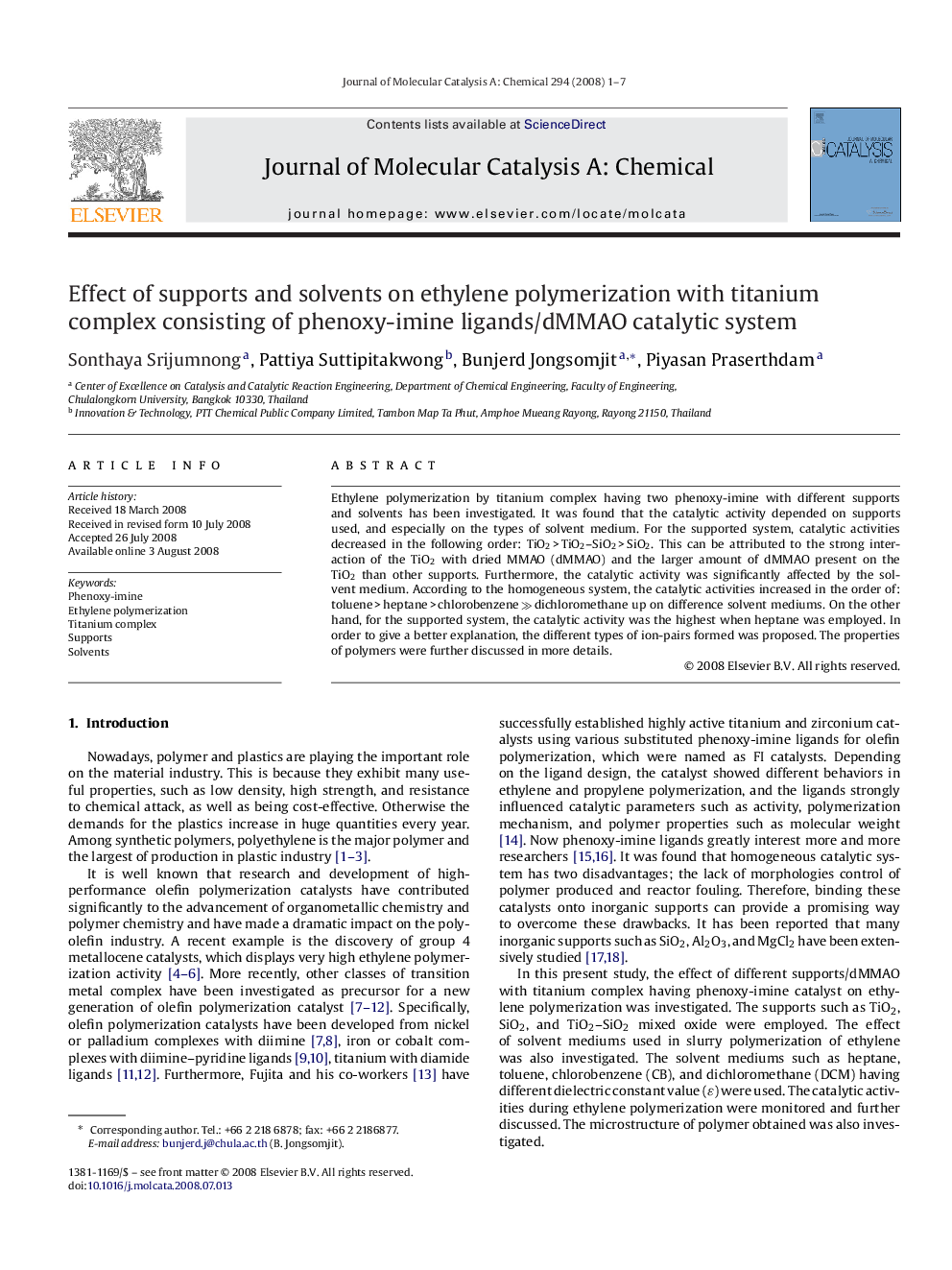| Article ID | Journal | Published Year | Pages | File Type |
|---|---|---|---|---|
| 67364 | Journal of Molecular Catalysis A: Chemical | 2008 | 7 Pages |
Ethylene polymerization by titanium complex having two phenoxy-imine with different supports and solvents has been investigated. It was found that the catalytic activity depended on supports used, and especially on the types of solvent medium. For the supported system, catalytic activities decreased in the following order: TiO2 > TiO2–SiO2 > SiO2. This can be attributed to the strong interaction of the TiO2 with dried MMAO (dMMAO) and the larger amount of dMMAO present on the TiO2 than other supports. Furthermore, the catalytic activity was significantly affected by the solvent medium. According to the homogeneous system, the catalytic activities increased in the order of: toluene > heptane > chlorobenzene ≫ dichloromethane up on difference solvent mediums. On the other hand, for the supported system, the catalytic activity was the highest when heptane was employed. In order to give a better explanation, the different types of ion-pairs formed was proposed. The properties of polymers were further discussed in more details.
Graphical abstractEthylene polymerization by titanium complex having two phenoxy-imine with different supports and solvents has been investigated. It was found that the catalytic activity depended on supports used, and especially on the types of solvent medium. For the supported system, catalytic activities decreased in the following order: TiO2 > TiO2–SiO2 > SiO2. This can be attributed to the strong interaction of the TiO2 with dried MMAO (dMMAO) and the larger amount of dMMAO present on the TiO2 than other supports. Furthermore, the catalytic activity was significantly affected by the solvent medium. According to the homogeneous system, the catalytic activities increased in the order of: toluene > heptane > chlorobenzene ≫ dichloromethane up on difference solvent mediums. On the other hand, for the supported system, the catalytic activity was the highest when heptane was employed. In order to give a better explanation, the different types of ion-pairs formed was proposed. The properties of polymers were further discussed in more details.Figure optionsDownload full-size imageDownload as PowerPoint slide
